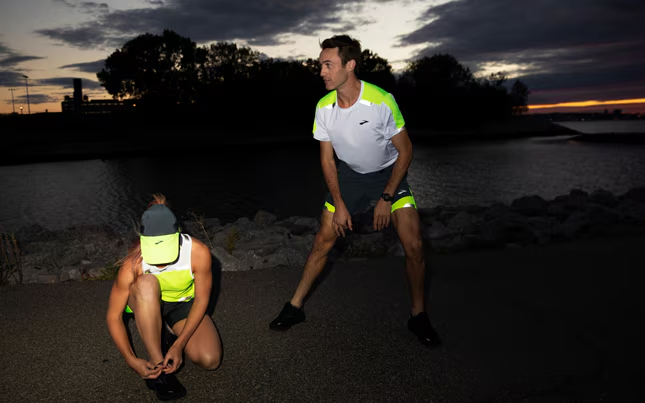On-the-Go Fun for Runners: Exploring Online Mobile Casinos
Whether you’re cooling down after a race or taking a breather on a training day, online mobile casinos offer an accessible and entertaining way to pass the time. With mobile-optimized platforms, runners can enjoy quick gameplay sessions right from their smartphones.
Proper running form is essential not only for maximizing your performance but also for preventing injuries. Whether you’re a beginner or an experienced runner, maintaining good form can make a significant difference in how efficiently you run and how much strain you put on your body. In this post, we will explore the key aspects of running form, why it matters, and how you can improve it to run better and with less risk of injury.

Why Proper Running Form Matters
Proper running form plays a crucial role in ensuring that your body moves efficiently and effectively during each stride. When your form is correct, you use less energy, run faster, and reduce the impact on your joints, muscles, and tendons. Running with poor form, on the other hand, can lead to unnecessary strain, fatigue, and even injuries that might sideline your training.
Incorporating good form into your running routine improves your biomechanics, making your body move in the most efficient way possible. This not only enhances your performance but also helps in reducing common running injuries like shin splints, runner’s knee, and plantar fasciitis.
Key Components of Proper Running Form
1. Posture: Stand Tall and Relaxed
The foundation of proper running form starts with your posture. Your torso should be upright with a slight lean forward from the ankles (not the waist). A good posture helps to maintain balance, reduces stress on the lower back, and prevents unnecessary strain on your legs.
- Keep your head up, eyes looking forward—not down at your feet.
- Your shoulders should be relaxed, not hunched or tensed. This allows for better arm movement and prevents shoulder pain.
- Maintain a slight forward lean, which naturally propels your body forward without causing excessive strain on your back.
2. Foot Strike: Land Lightly and Midfoot
The way your feet hit the ground is crucial for minimizing impact and maximizing efficiency. Many runners land either on their heels or their toes, both of which can lead to overstriding, increased impact, and potential injuries.
- Aim to land with your foot directly under your body, striking the ground with the midfoot (the area between your arch and the ball of your foot).
- Avoid overstriding, where your foot lands too far ahead of your body. This can put excess strain on your knees and hips.
- Try to land lightly to reduce impact on your joints and muscles. A soft, quiet foot strike is often a good indicator that your form is correct.
3. Cadence: Find Your Ideal Stride Rate
Cadence refers to the number of steps you take per minute while running. A higher cadence often correlates with better form and fewer injuries. Studies have shown that running with a cadence of about 170-180 steps per minute is ideal for many runners, though this can vary depending on your stride length and running speed.
- Aim for quicker, lighter steps rather than long, heavy strides.
- A higher cadence reduces the risk of overstriding and helps you maintain a steady rhythm throughout your run.
4. Arm Swing: Keep It Relaxed and Efficient
Your arms play a vital role in maintaining balance and driving your body forward as you run. An improper arm swing can waste energy and cause muscle strain, but a smooth, relaxed arm movement can help propel you forward and keep you steady.
- Keep your elbows bent at about 90 degrees, with your arms moving forward and backward (not across your body).
- Avoid clenching your fists. Keep your hands relaxed, as tight fists can lead to tension in your arms and shoulders.
- Ensure your arms swing in alignment with your legs, with each arm pushing forward in sync with the opposite leg.
5. Hips and Core: Engage for Stability
The position of your hips and the activation of your core are key to maintaining proper running form. A strong core provides the stability needed to avoid excessive movements that can lead to fatigue or injury.
- Keep your hips level, avoiding excessive tilting or swaying.
- Engage your core to support your torso and prevent excessive forward or backward lean.
- A stable core will help maintain a straight, efficient posture and allow for better control over your movements.
Common Running Form Mistakes to Avoid
1. Overstriding
Overstriding occurs when your foot lands too far in front of your body. This can cause you to land with a straight leg, creating a jarring impact and putting undue stress on your knees, hips, and lower back. To avoid overstriding, focus on keeping your feet landing directly under your body, with a quick and light stride.
2. Tensing the Upper Body
Tension in your shoulders, arms, or hands can lead to unnecessary fatigue and discomfort. Running with a relaxed upper body helps you conserve energy and allows for better fluidity in your movements. Keep your shoulders loose and avoid clenching your fists during your run.
3. Leaning Too Far Forward or Backward
Leaning too far forward from the waist or backward can disrupt your natural stride and put unnecessary stress on your back. A slight forward lean from the ankles is ideal, but make sure to avoid arching your back or slumping forward. Keep your spine aligned and maintain an upright position.
How to Improve Your Running Form
Improving your running form takes time and practice, but with dedication, you can gradually make adjustments to enhance your efficiency and reduce injury risk. Here are a few ways to improve your form:
1. Focus on Form During Short Runs
Start by consciously focusing on your form during shorter, easy-paced runs. Pay attention to your posture, foot strike, arm swing, and cadence. With time, these adjustments will become second nature.
2. Use Drills to Improve Form
Incorporate running drills into your training routine to improve specific aspects of your form. Drills such as high knees, butt kicks, and strides can help improve your posture, cadence, and leg turnover.
3. Strengthen Your Core and Lower Body
A strong core and lower body are essential for maintaining good form during long runs. Incorporate exercises such as planks, bridges, lunges, and squats to build strength in these areas and support your running form.
4. Consider a Running Coach or Video Analysis
If you’re unsure about your running form or want personalized guidance, consider working with a running coach or getting a video analysis of your running technique. A coach can provide tailored feedback and help you make specific adjustments to your form.
Conclusion
Proper running form is crucial for optimizing performance, preventing injuries, and making running a more enjoyable and sustainable activity. By focusing on key elements such as posture, foot strike, cadence, arm swing, and core engagement, you can ensure that your body moves efficiently and reduces the risk of strain. While improving your form may take time, the benefits are well worth the effort. A strong, efficient running form will help you run faster, longer, and more comfortably, allowing you to achieve your goals and enjoy the many benefits of running











